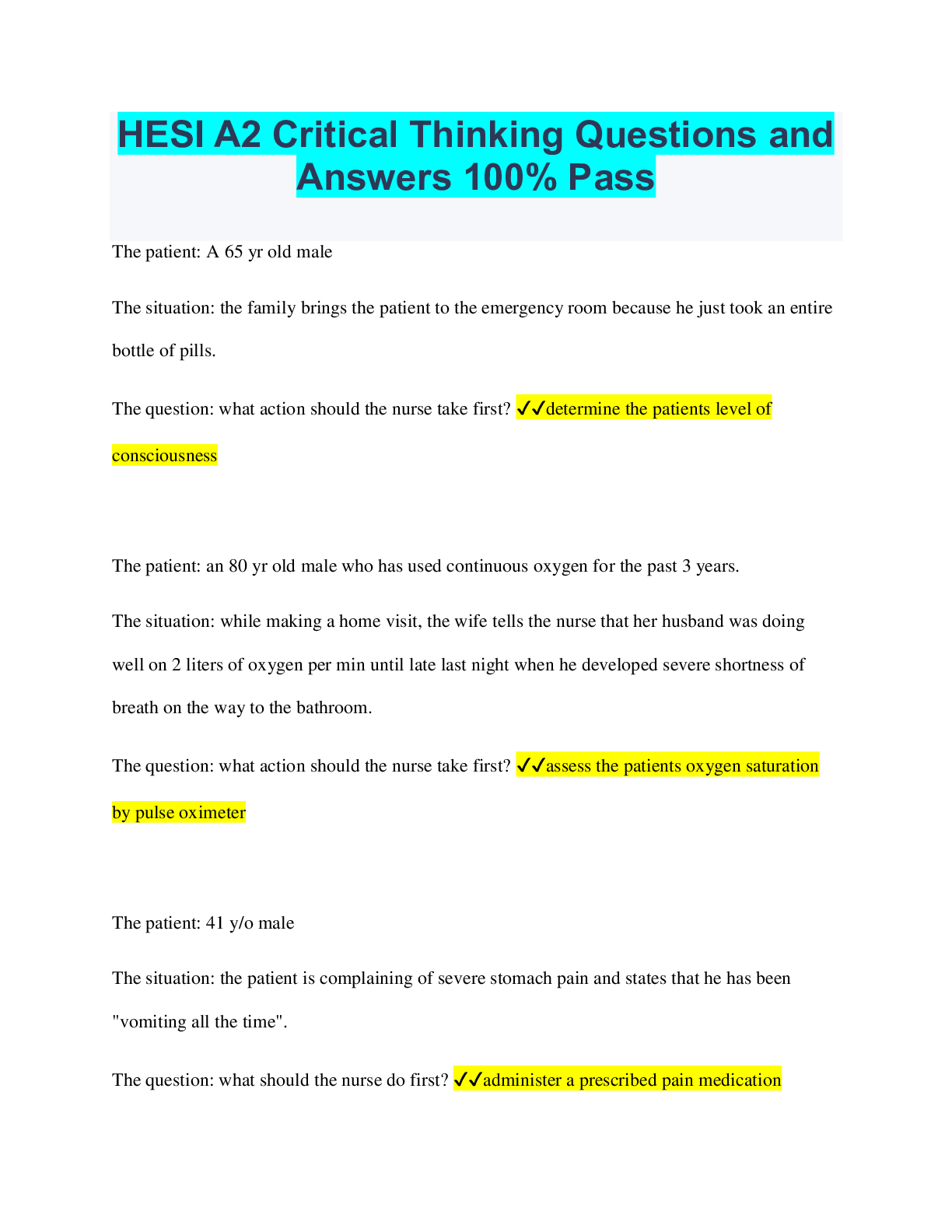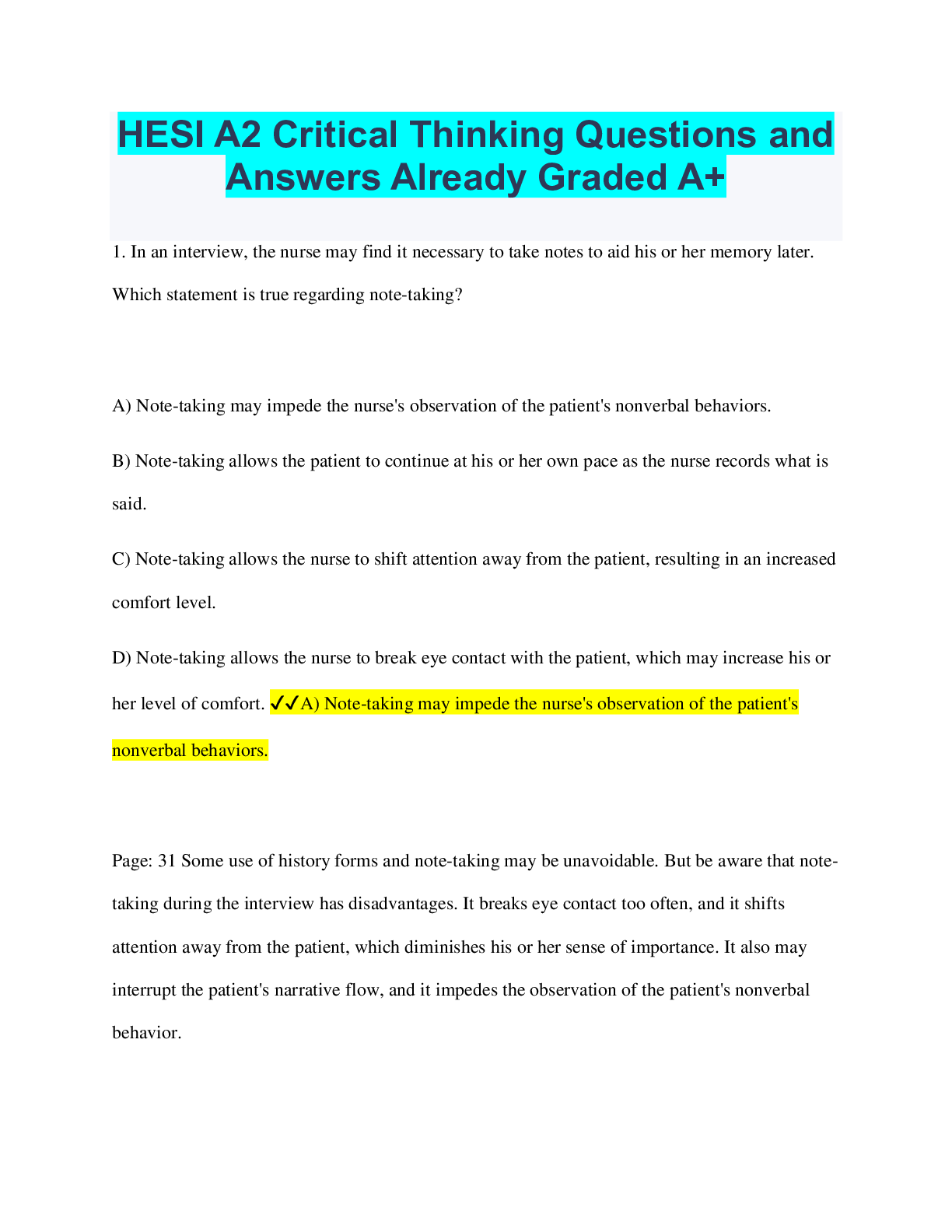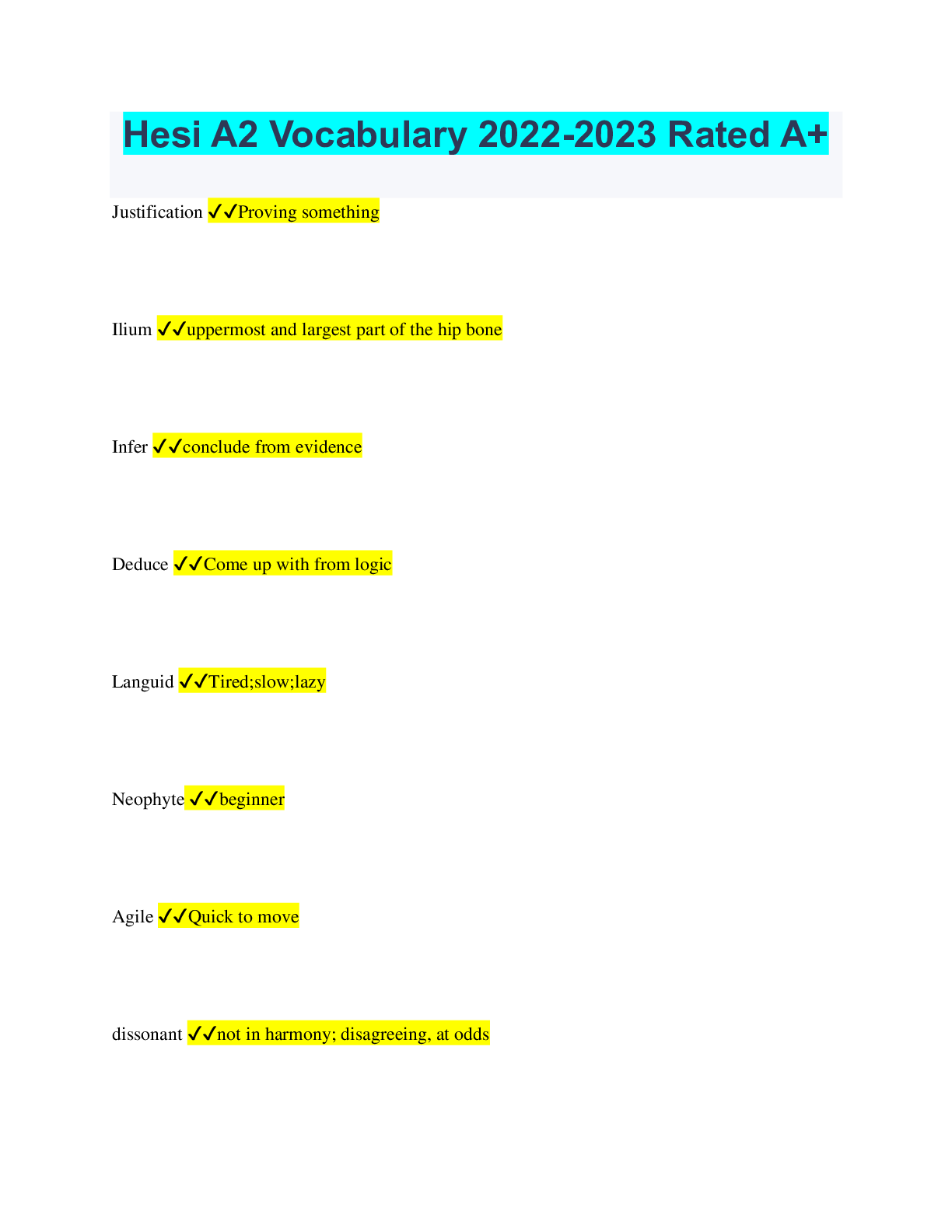Biology > QUESTIONS & ANSWERS > Biology 1000 Exam #1 (All)
Biology 1000 Exam #1
Document Content and Description Below
Biology 1000 Exam #1 what is the organization of living organisms - ✔✔atoms, molecules, organelles, cells, tissues, organs, organ system describe the characteristics of living organisms - ✔�... �have organization acquire and use energy maintain constant internal conditions have inherited information that determines form and function are composed of 1 or more cells respond to their environment all living organisms are going to reproduce define science - ✔✔a collection of unified insights about nature, the evidence for which is an array of facts science does not deal with what kind of truth? - ✔✔absolute truth what are facts - ✔✔explanations that are thought to be true which scientific sources are considered to be the most reliable? the least? - ✔✔most: peer reviewed journals least: internet list all of the scientific sources best to worst - ✔✔peer reviewed journals reviewed texts science books science magazines newspapers/TV internet Explain the difference between a theory and a hypothesis - ✔✔theory: generalization that explains many observations -- has been tested and researchers have yet to fond evidences that disprove it hypothesis: tentative, testable explanation for an observed phenomenon describe the steps of the scientific method and be able to apply the scientific method to a given problem - ✔✔observation hypothesis experiment/test conclusion independent variables - ✔✔factor of the experiment being tested dependent variable - ✔✔response of change that occurs due to the independent variable control sample - ✔✔a sample where the independent variables are omitted what is the definition of an element - ✔✔a substance that can't be reduced to a simpler substance (composed of atoms) definition of an atom - ✔✔basic unit of matter composed of protons, electrons and neutrons describe the particles found in an atom - ✔✔protons: positive, atomic number neutrons: neutral, no charge electrons: negative, more or less than protons what is the definition of a nucleus - ✔✔very little space, but contains nearly all the mass given the atomic number, atomic mass, and charge of an atom, list the number of protons, neutrons, and electrons in that atom - ✔✔protons = atomic mass number neutrons = mass # - protons electrons = if negative - more than protons if positive - less than protons given the number of electrons, or the atomic # and charge of an atom, determine the # of electrons found in the outer shell of an atom - ✔✔1) first shell will only have two 2) 8 to make a full shell 3) atomic # = number of shells on the circles given the mass number and atomic number, determine the number of protons and neutrons - ✔✔protons = atomic number neutrons = mass # - protons define the term isotope - ✔✔forms of a single element that differs in the number of neutrons definition of radioisotopes - ✔✔an isotope that has an unstable nucleus - loss of neutrons from the nucleus what makes a radioisotope radioactive - ✔✔it has an unstable nucleus electrons - ✔✔very little mass, negative charge (if it's negative then it has one more than proton, if positive it has one less) ions - ✔✔atoms that differ in the number of protons and electrons = positive or negative charged atoms atoms will form _______ to satisfy the requirements of their outer shells - ✔✔bonds molecule - ✔✔number of atoms in a defined spatial relationship Covalent bonding - ✔✔bonds in which atoms share electrons positive charge - lower number of electrons than the atomic number ionic bonding - ✔✔atoms bonded through attraction of oppositely charged particles (ions) - exchange electrons polar covalent bonding - ✔✔shared electrons spend more time neat the larger nucleus, creates a negative charge on 1 end of the molecule hydrogen bonding - ✔✔formed when partially positive hydrogen atom in a polar cobalt bond is attracted to a partially negative atom in antlers polar covalent bond How do solute, solution, and solvent relate to one another? - ✔✔they all have to work together to figure out which substance is which. Solution - ✔✔mixture of two or more substances solute - ✔✔substance that is dissolved in a solvent solvent - ✔✔the substance in which a solute is dissolved describe the properties of wat [Show More]
Last updated: 2 years ago
Preview 1 out of 14 pages
.png)
Buy this document to get the full access instantly
Instant Download Access after purchase
Buy NowInstant download
We Accept:

Reviews( 0 )
$10.00
Can't find what you want? Try our AI powered Search
Document information
Connected school, study & course
About the document
Uploaded On
Jan 27, 2023
Number of pages
14
Written in
Additional information
This document has been written for:
Uploaded
Jan 27, 2023
Downloads
0
Views
91


























